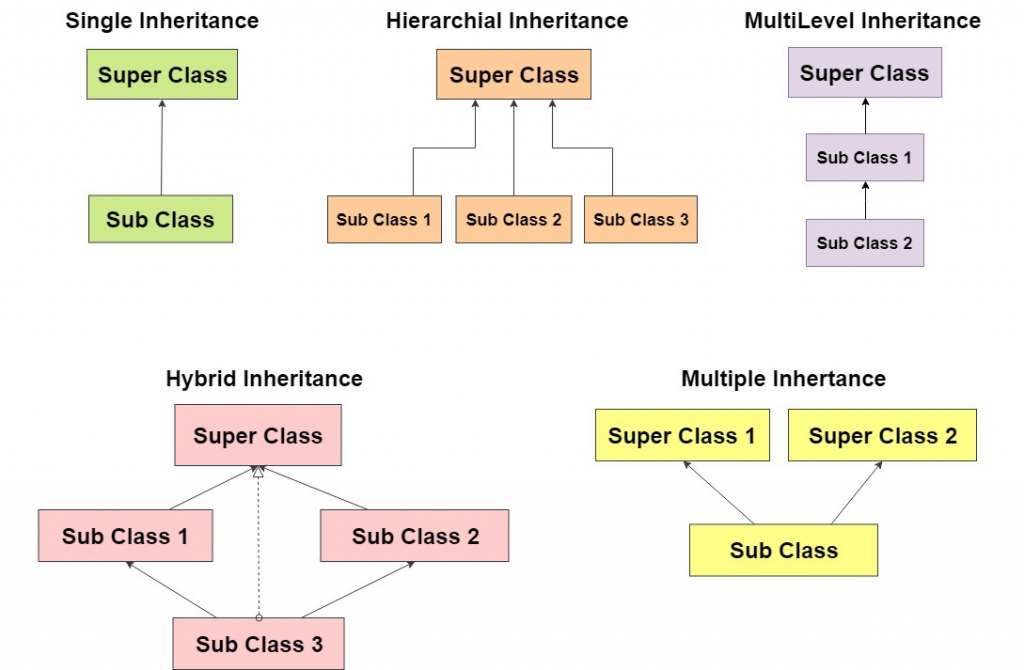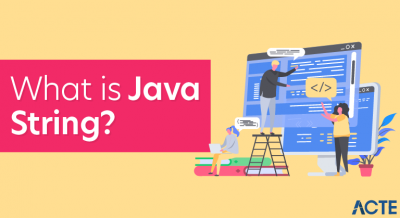
The process by which one class acquires the properties(data members) and functionalities(methods) of another class is called inheritance. The aim of inheritance is to provide the reusability of code so that a class has to write only the unique features and rest of the common properties and functionalities can be extended from the other class.
Child Class:
- The class that extends the features of another class is known as child class, subclass or derived class.
Parent Class:
- The class whose properties and functionalities are used(inherited) by another class is known as parent class, super class or Base class.
- Inheritance is a process of defining a new class based on an existing class by extending its common data members and methods.
- Inheritance allows us to reuse code, it improves reusability in your java application.
Note:
- The biggest advantage of Inheritance is that the code that is already present in base class need not be rewritten in the child class.
- This means that the data members(instance variables) and methods of the parent class can be used in the child class as.
- If you are finding it difficult to understand what is class and object then refer the guide that I have shared on object oriented programming: OOPs Concepts
Let’s back to the topic:
Syntax: Inheritance in Java
To inherit a class we use an extended keyword. Here class XYZ is child class and class ABC is parent class. The class XYZ is inheriting the properties and methods of ABC class.
- class XYZ extends ABC
- {
- }
Inheritance Example
In this example, we have a base class Teacher and a sub class PhysicsTeacher. Since class PhysicsTeacher extends the designation and college properties and work() method from base class, we need not to declare these properties and methods in subclass.
Here we have collegeName, designation and work() method which are common to all the teachers so we have declared them in the base class, this way the child classes like MathTeacher, MusicTeacher and PhysicsTeacher do not need to write this code and can be used directly from base class.
- class Teacher {
- String designation = “Teacher”;
- String collegeName = “Beginnersbook”;
- void does(){
- System.out.println(“Teaching”);
- }
- }
- public class PhysicsTeacher extends Teacher{
- String mainSubject = “Physics”;
- public static void main(String args[]){
- PhysicsTeacher obj = new PhysicsTeacher();
- System.out.println(obj.collegeName);
- System.out.println(obj.designation);
- System.out.println(obj.mainSubject);
- obj.does();
- }
- }
Output:
Beginnersbook
Teacher
Physics
Teaching
Based on the above example we can say that PhysicsTeacher IS-A Teacher. This means that a child class has an IS-A relationship with the parent class. This is inheritance is known as IS-A relationship between child and parent class
Note:
The derived class inherits all the members and methods that are declared as public or protected. If the members or methods of super class are declared as private then the derived class cannot use them directly. The private members can be accessed only in its own class. Such private members can only be accessed using public or protected getter and setter methods of super class as shown in the example below.
- class Teacher {
- private String designation = “Teacher”;
- private String collegeName = “Beginnersbook”;
- public String getDesignation() {
- return designation;
- }
- protected void setDesignation(String designation) {
- this.designation = designation;
- }
- protected String getCollegeName() {
- return collegeName;
- }
- protected void setCollegeName(String collegeName) {
- this.collegeName = collegeName;
- }
- void does(){
- System.out.println(“Teaching”);
- }
- }
- public class JavaExample extends Teacher{
- String mainSubject = “Physics”;
- public static void main(String args[]){
- JavaExample obj = new JavaExample();
- /* Note: we are not accessing the data members
- * directly we are using public getter method
- * to access the private members of parent class
- */
- System.out.println(obj.getCollegeName());
- System.out.println(obj.getDesignation());
- System.out.println(obj.mainSubject);
- obj.does();
- }
- }
The output is:
Beginnersbook
Teacher
Physics
Teaching
The important point to note in the above example is that the child class is able to access the private members of the parent class through protected methods of parent class. When we make an instance variable(data member) or method protected, this means that they are accessible only in the class itself and in child class. These public, protected, private etc. are all access specifiers and we will discuss them in the coming tutorials.
Types of inheritance
To learn types of inheritance in detail, refer: Types of Inheritance in Java.

Single Inheritance: refers to a child and parent class relationship where a class extends the other class.
Multilevel inheritance: refers to a child and parent class relationship where a class extends the child class. For example class C extends class B and class B extends class A.
Hierarchical inheritance: refers to a child and parent class relationship where more than one class extends the same class. For example, classes B, C & D extends the same class A.
Multiple Inheritance: refers to the concept of one class extending more than one class, which means a child class has two parent classes. For example class C extends both classes A and B. Java doesn’t support multiple inheritance, read more about it here.
Hybrid inheritance: Combination of more than one type of inheritance in a single program. For example class A & B extends class C and another class D extends class A then this is a hybrid inheritance example because it is a combination of single and hierarchical inheritance.





